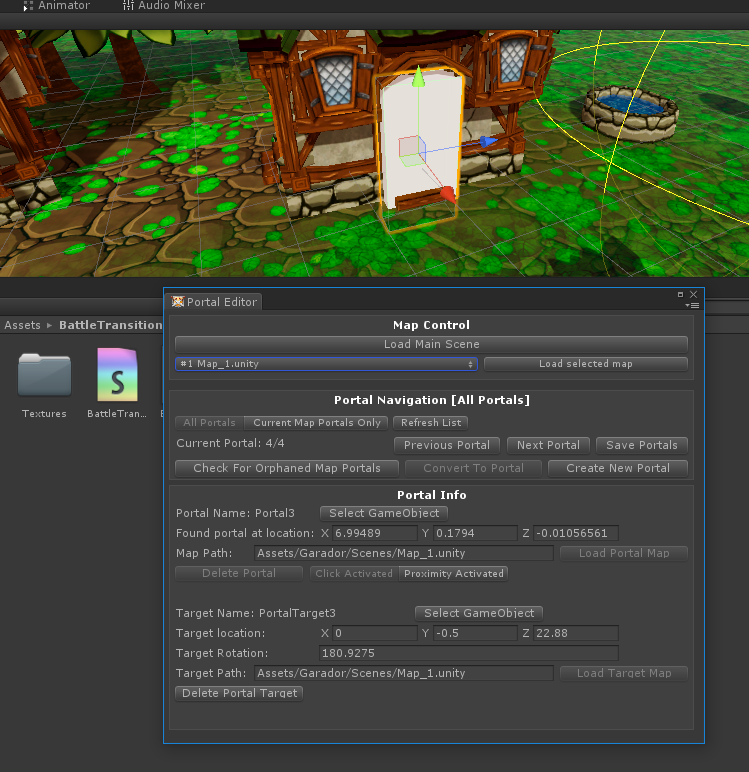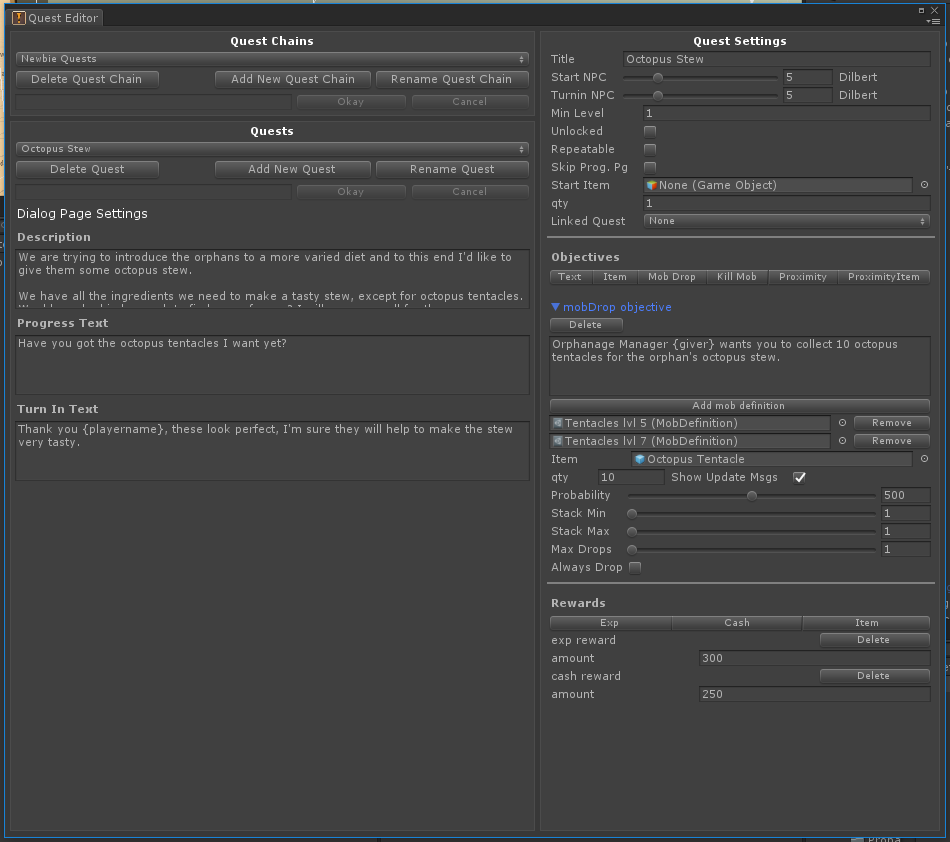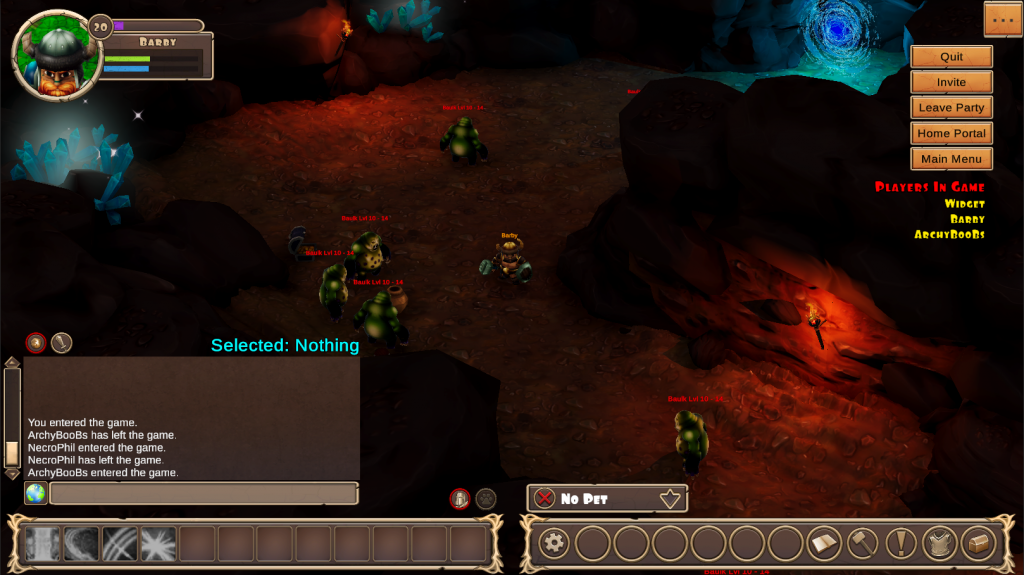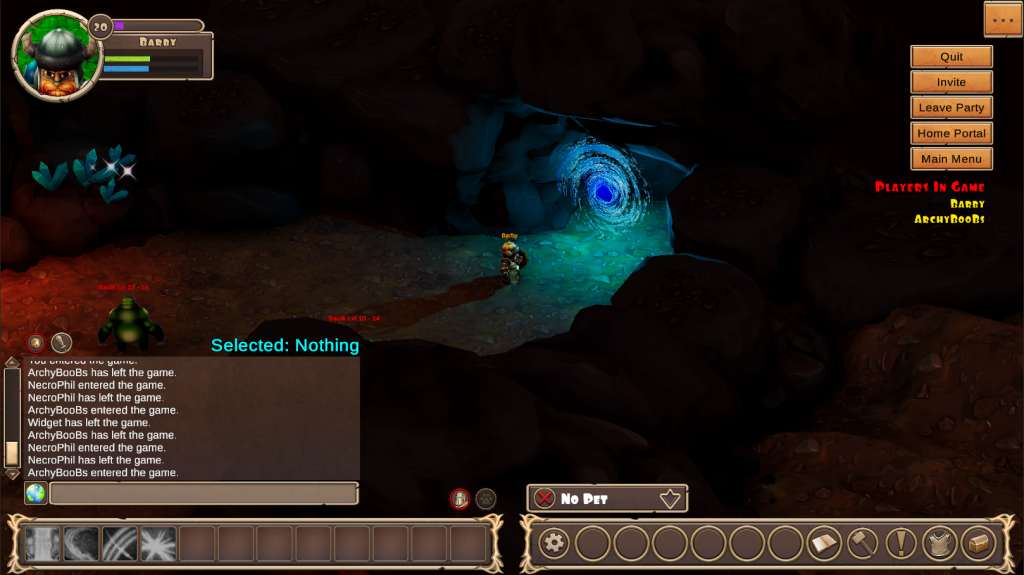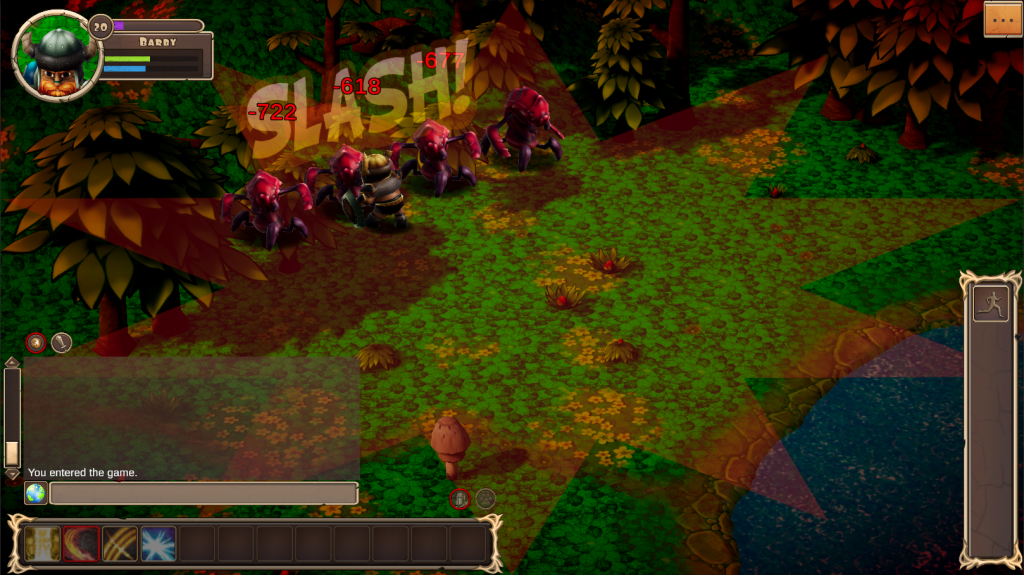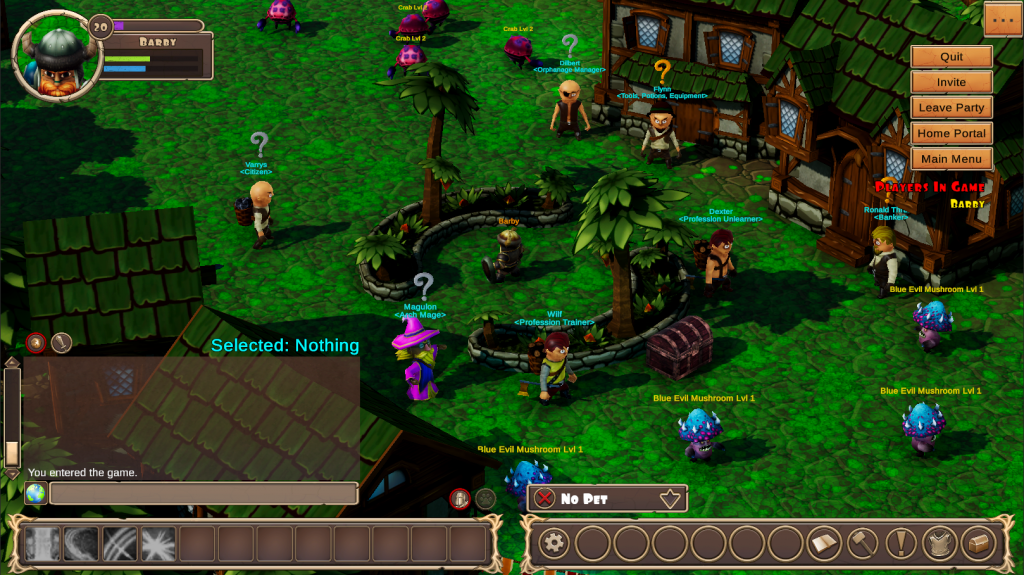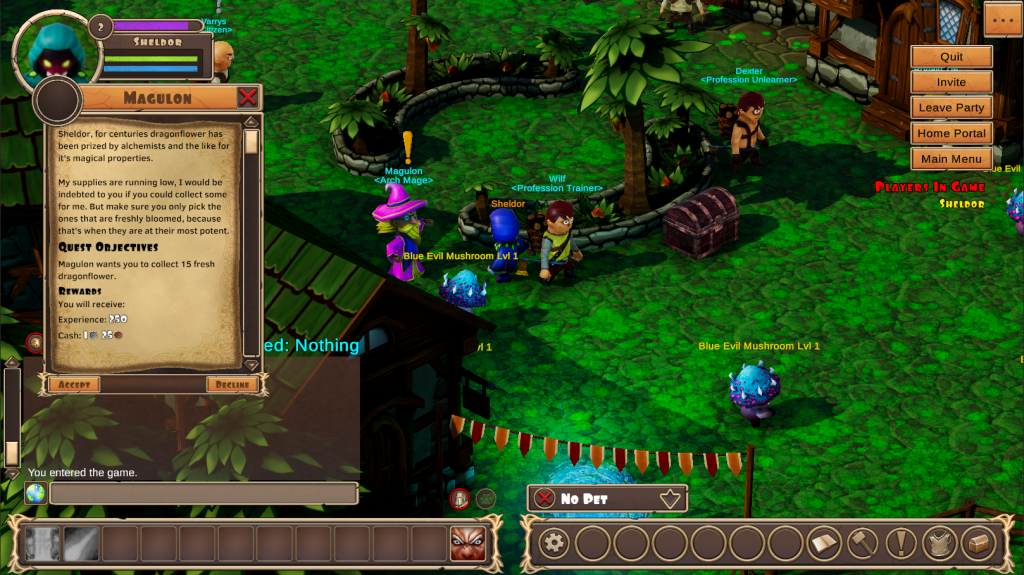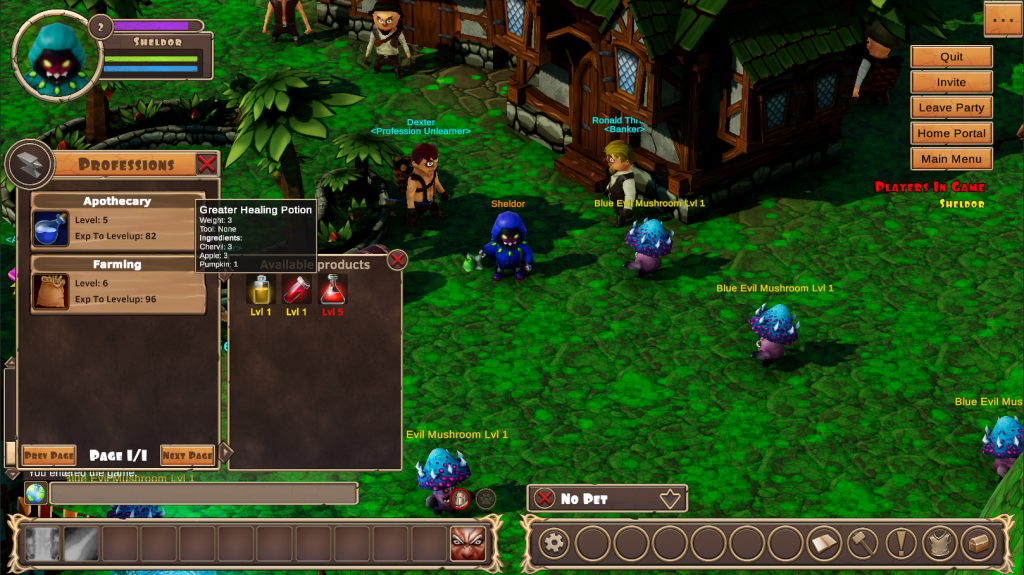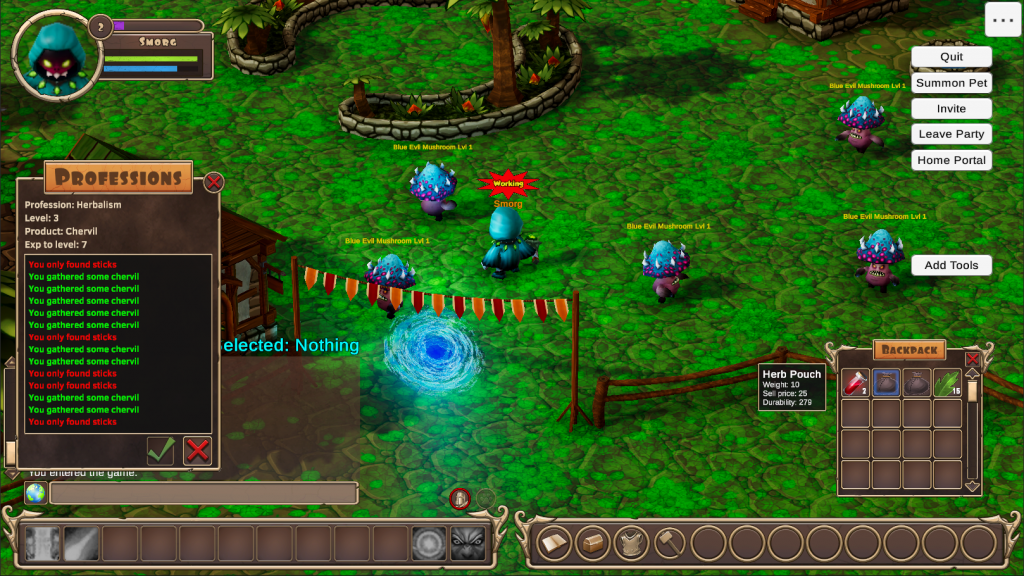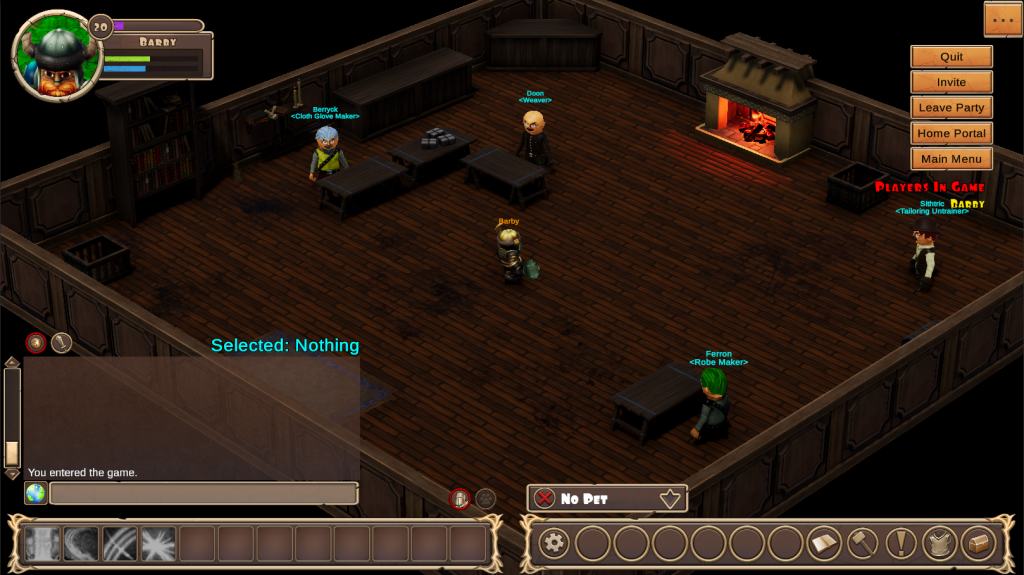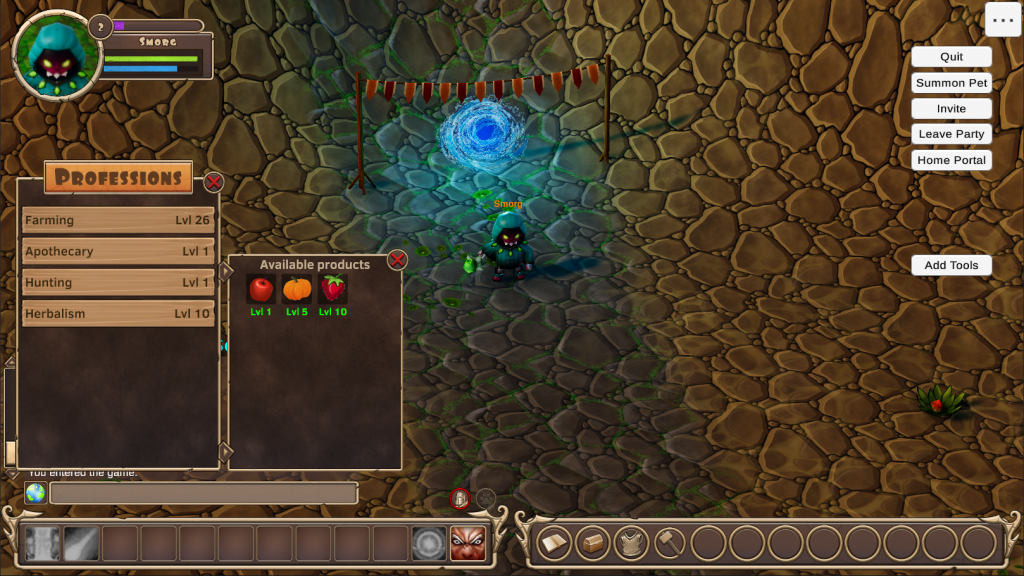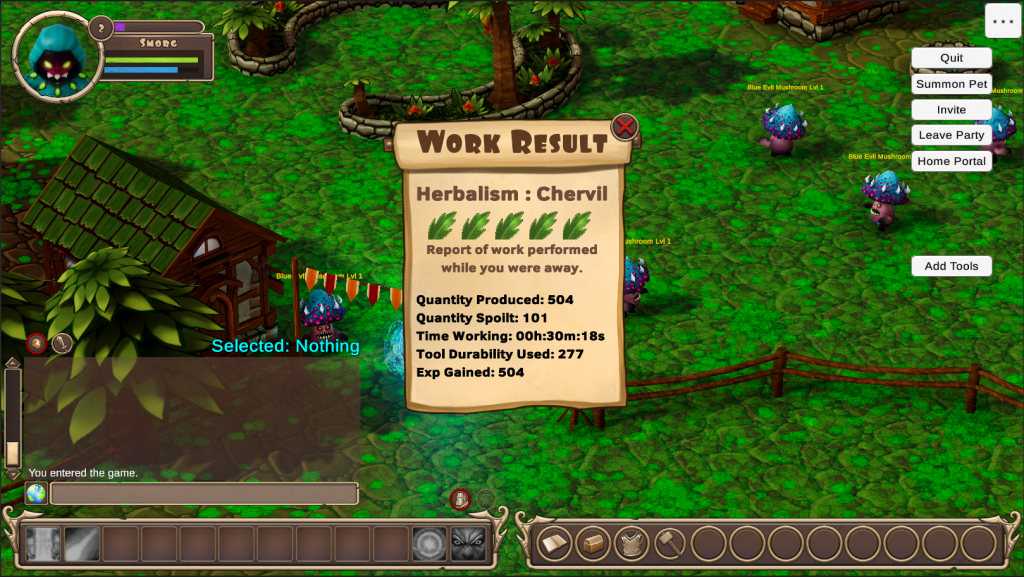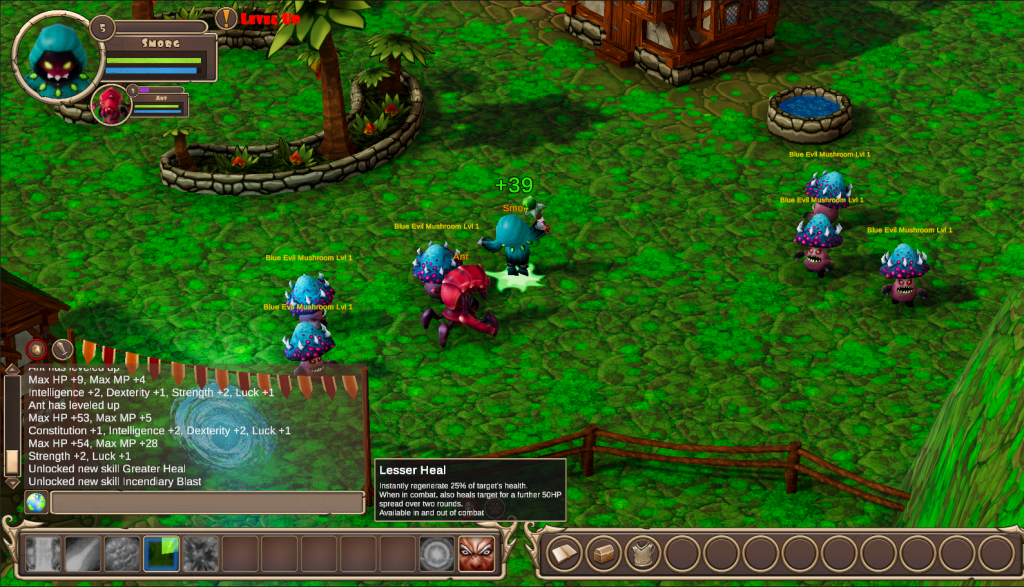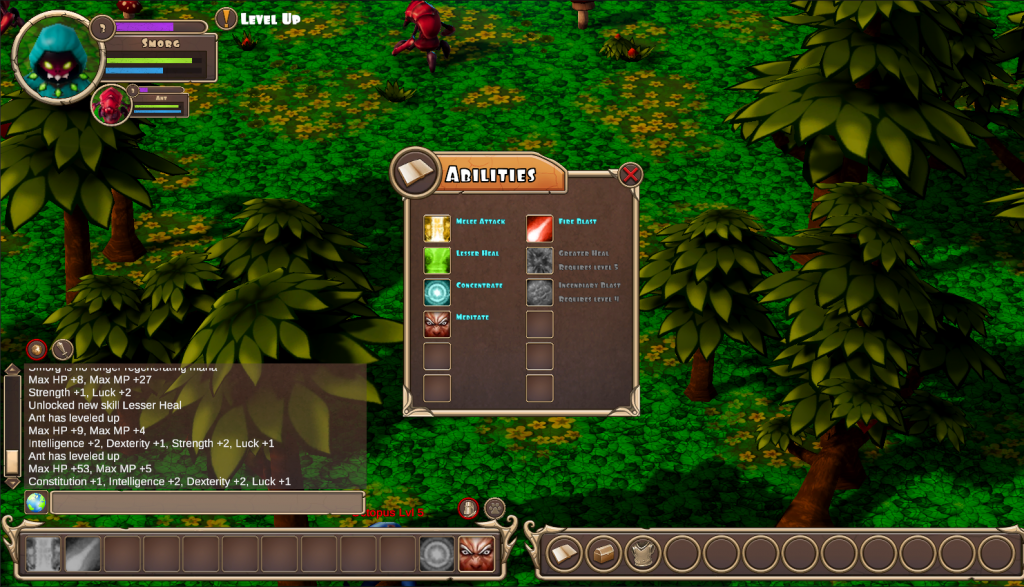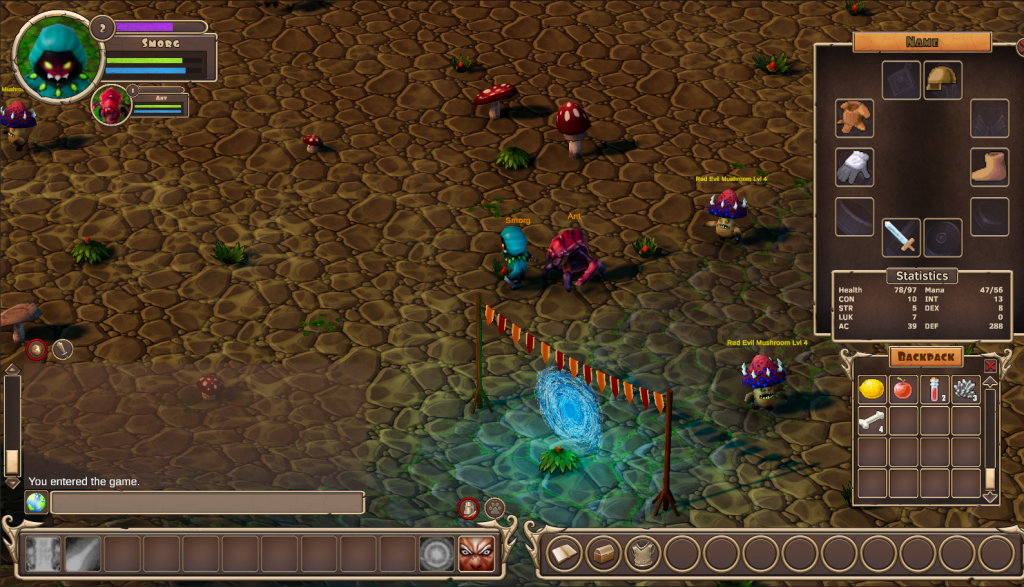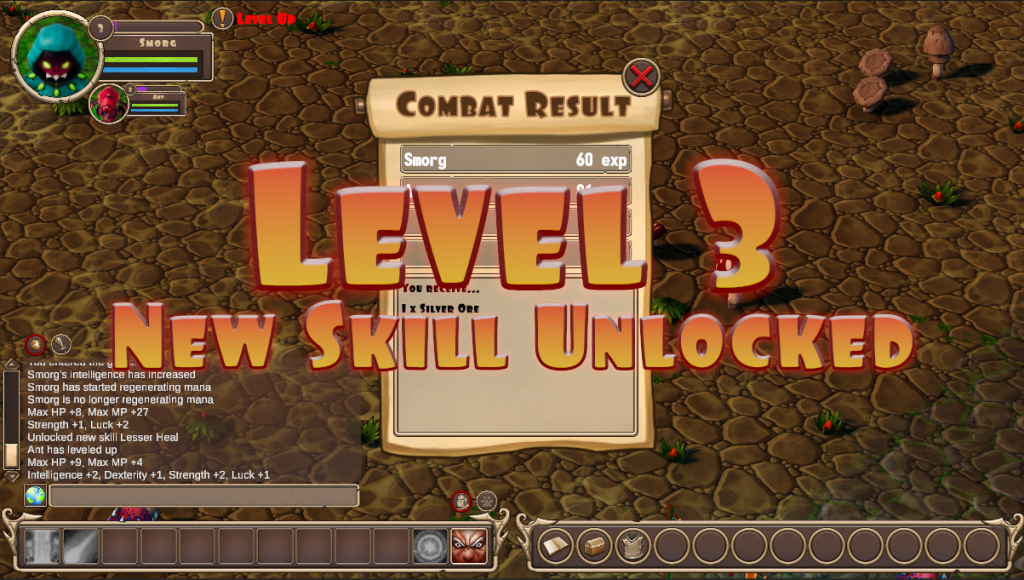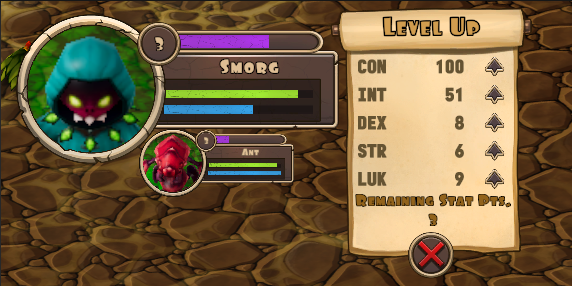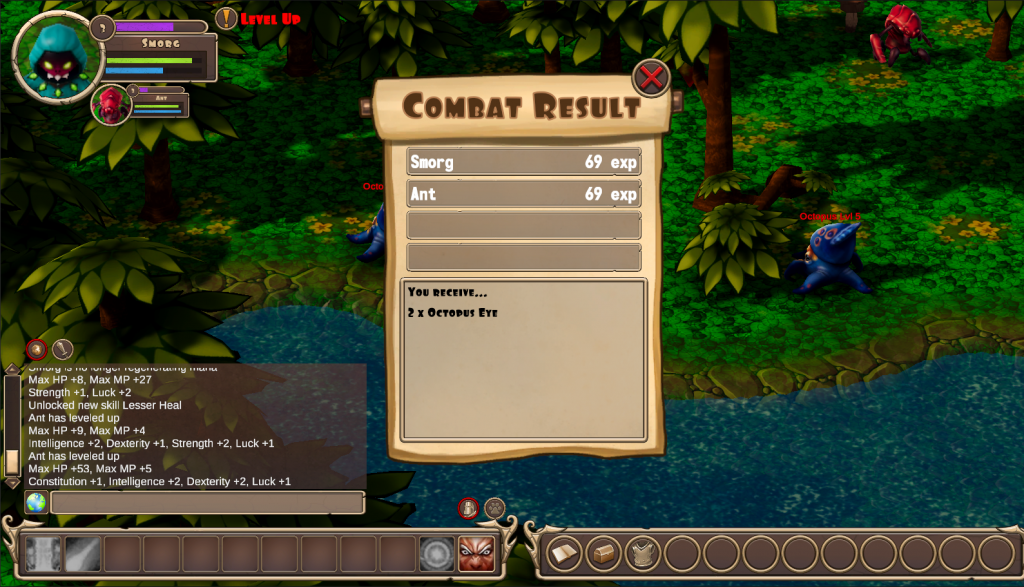From our thread on the Unity Forums
We’ve been working on a lot of ‘under the hood’ stuff, making sure the core systems are as stable and maintainable as possible. The worst thing is finding out sometime down the line that some bad early design decisions have come back to haunt you.
One of the first obvious hurdles we had to overcome was how to deal with teleports. Initially, we had a simple design, whereby the teleport gameobject contained a component that had a reference to a destination gameobject and when activated it just moved the player to the destination location.
All well and good, except that as we use a different scene for each map we ran into the issue that as cross scene references aren’t allowed we couldn’t store the reference to the destination in the teleport if the destination wasn’t in the same map.
So a slight design change meant we stored the name of the destination gameobject in the teleport along with the scene path as strings and then when activated, the teleport loads the new scene (if necessary) and once the scene is loaded it searches for the destination gameobject by name and then moves the player to its location.
Job done, or was it? With the number of teleports that will eventually be in the game, this would soon become a nightmare to maintain. Anything that relies on manual entry of strings to make references for anything other than a few objects isn’t going to cut it.
In addition to that, we found that although this worked acceptably in a single player environment once we tried it networked we saw ‘warping’ of the player character because it was at its old location from the previous map for a few frames whilst the teleport located the destination and sent the new location over the network. So we fixed this by adding the location and rotation of the destination as properties of the teleport and sending them along with the scene change message, so all clients could update to the new position instantly.
This, however, meant that it was even more difficult to maintain the link between teleports and destinations and was quite frankly turning into a nightmare. So it was pretty obvious that a rethink was required.
After a bit of discussion, it was decided to move all teleport logic and data to a singleton manager which would store the information for all the teleports and destinations. Which just left the issue of how to easily get that information into the manager in the first place.
Custom Editor Window to the rescue!
We designed a custom editor that enables us to create/edit and delete teleports directly in scenes and it automatically saves the info for each teleport/destination into an asset which is loaded into the teleport manager at runtime. This has changed the task of maintenance from a manual task to visual design. We can quickly locate and update teleports and destination maps/positions and the new information is automatically saved. We can also automatically check for orphaned teleport and destination objects.
Now when a teleport gameobject is activated at runtime, it just queries the manager for its destination information and voila!
Quick snap of the editor in action, and that’s it for this update. See you again soon.
